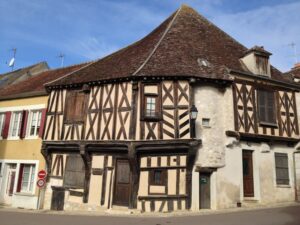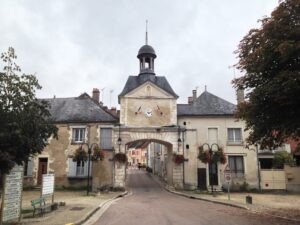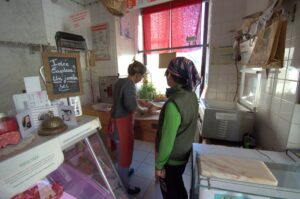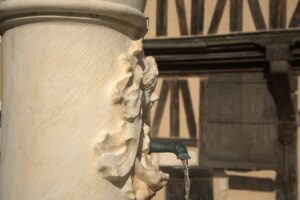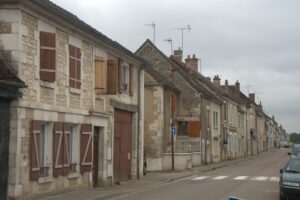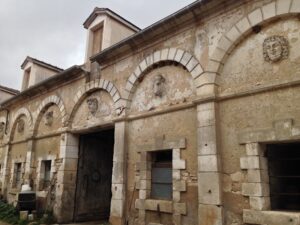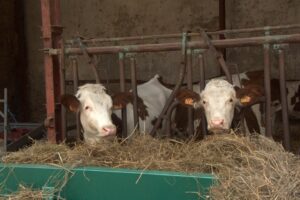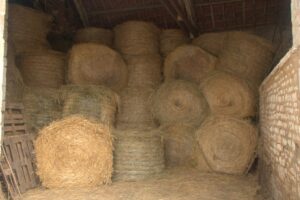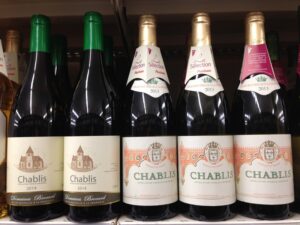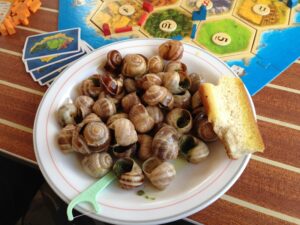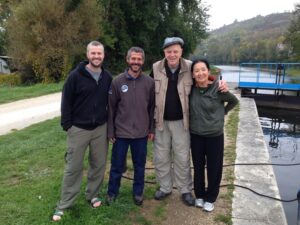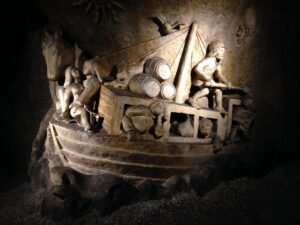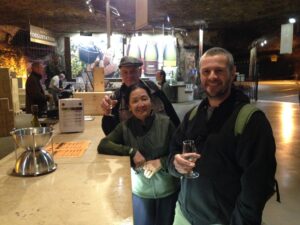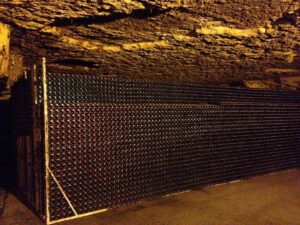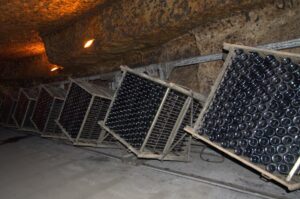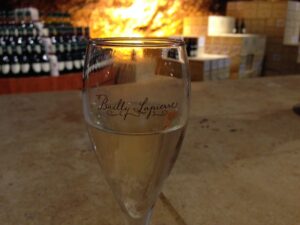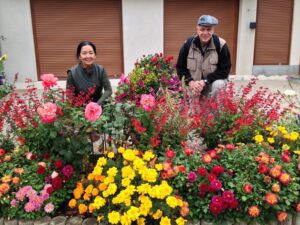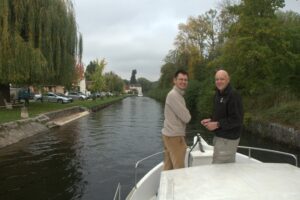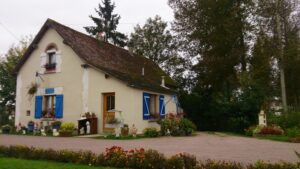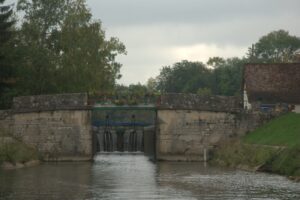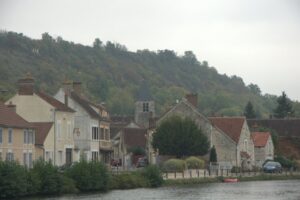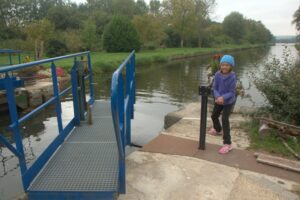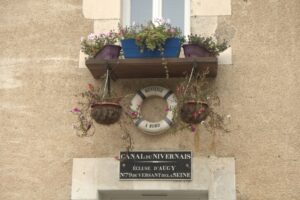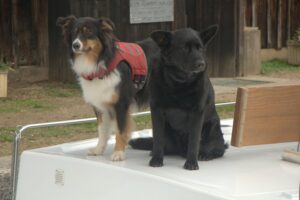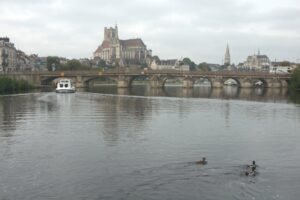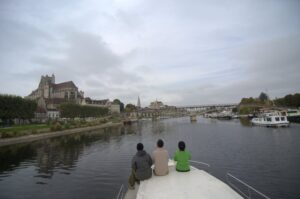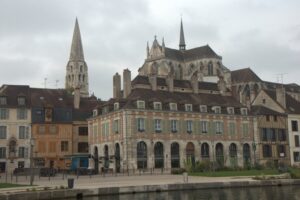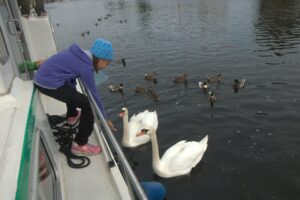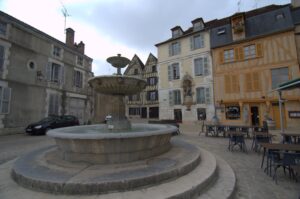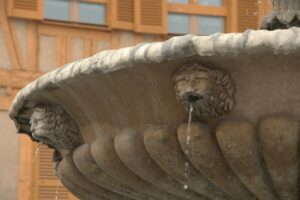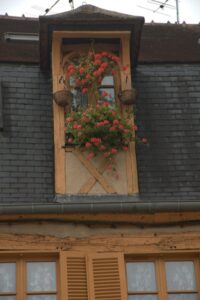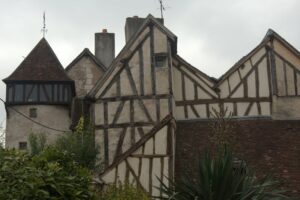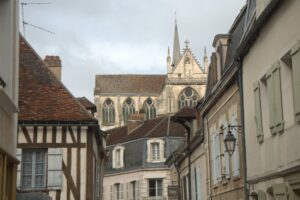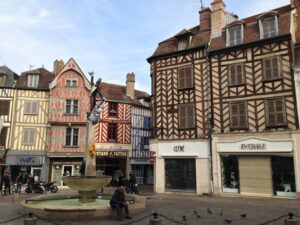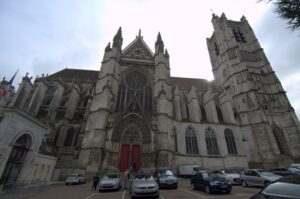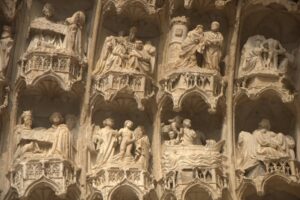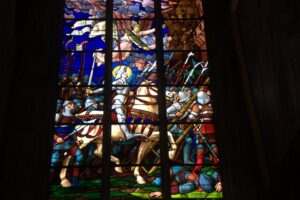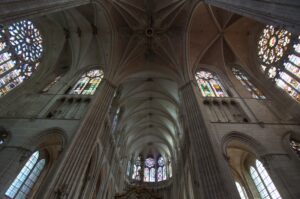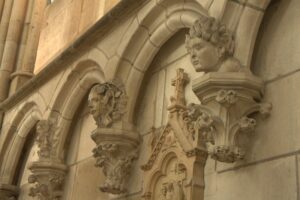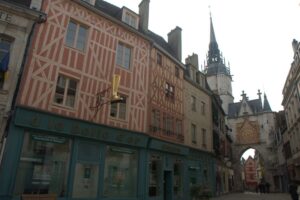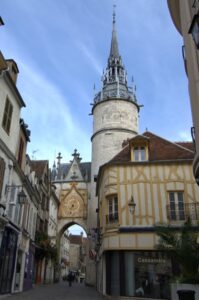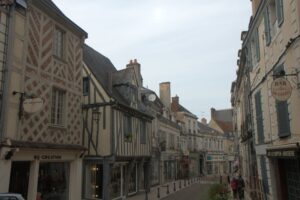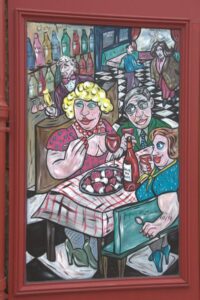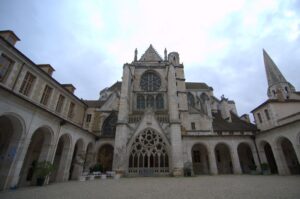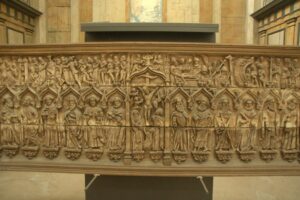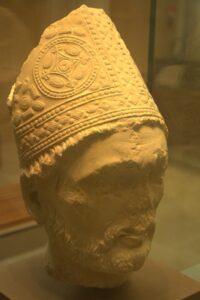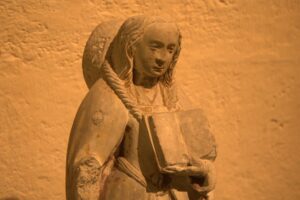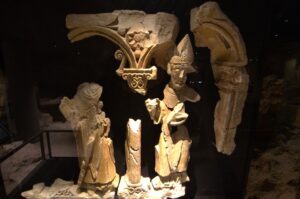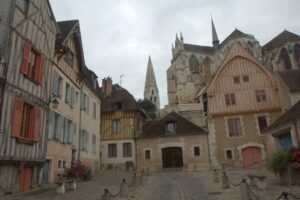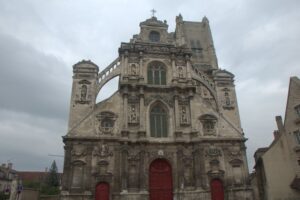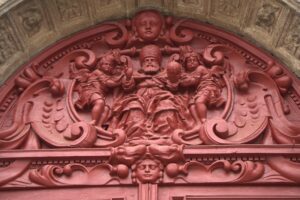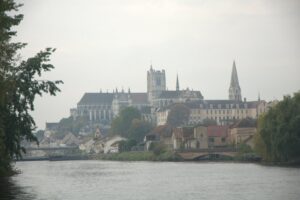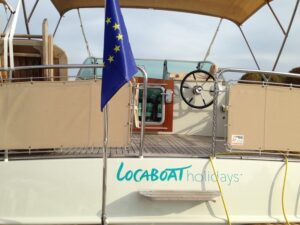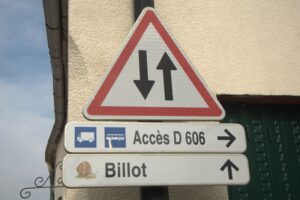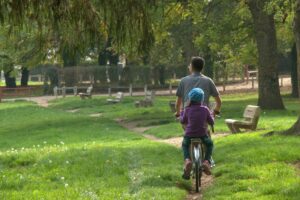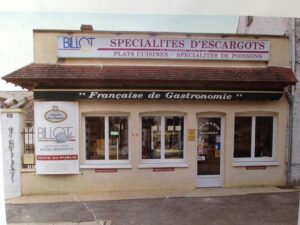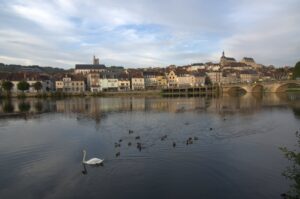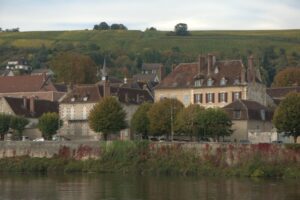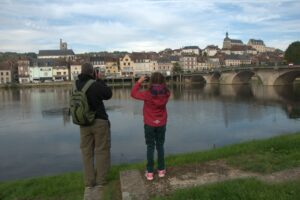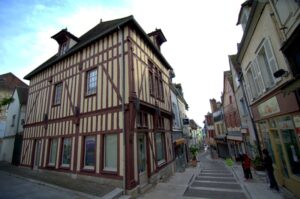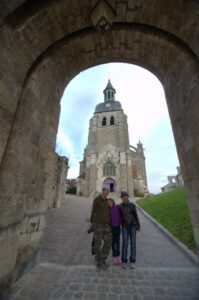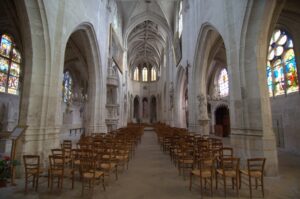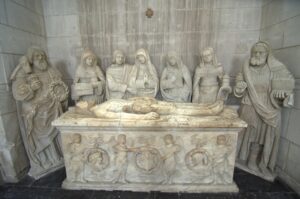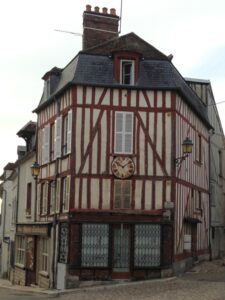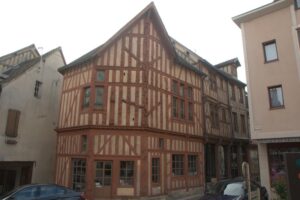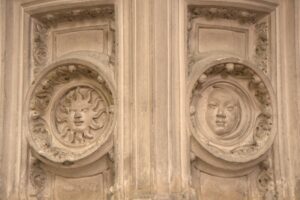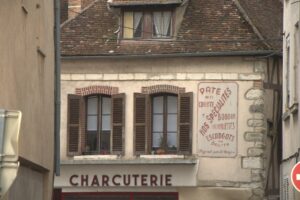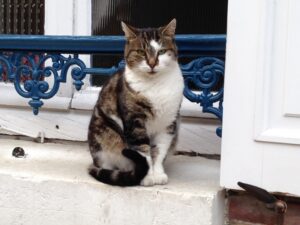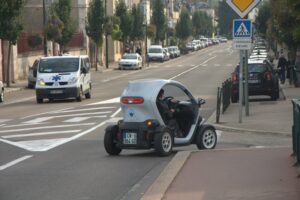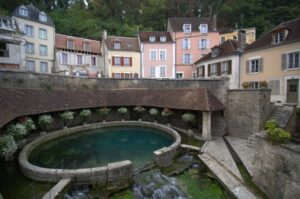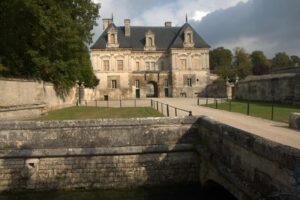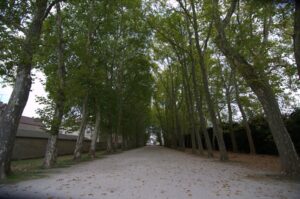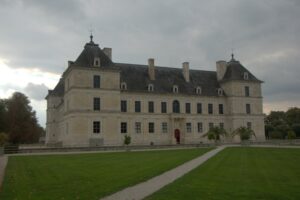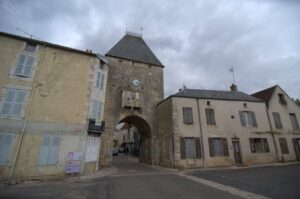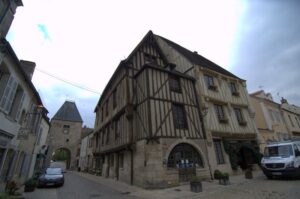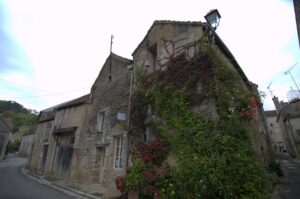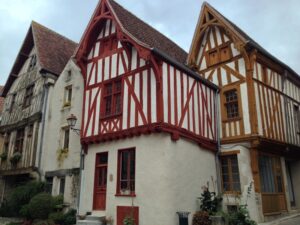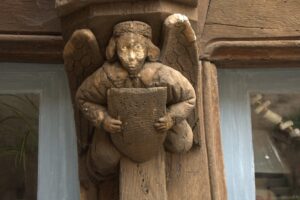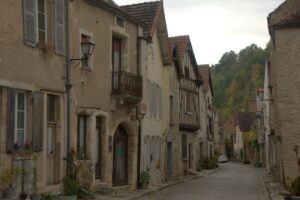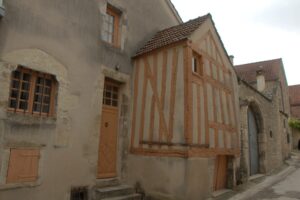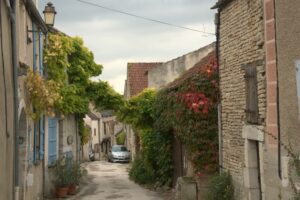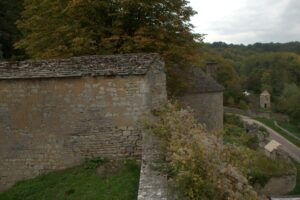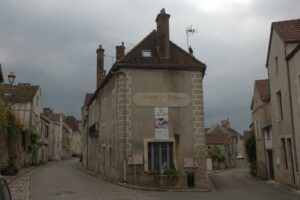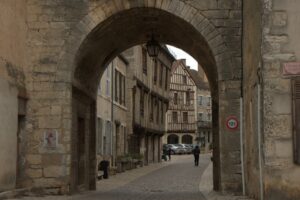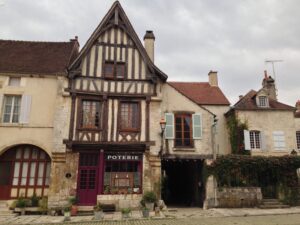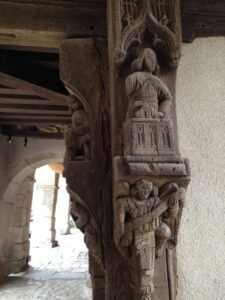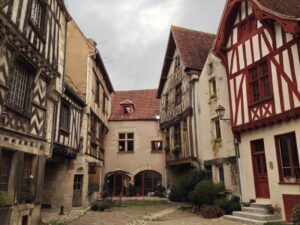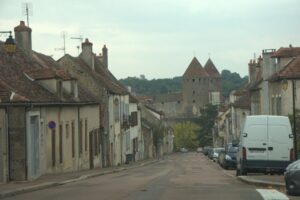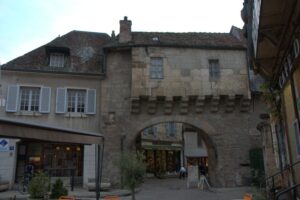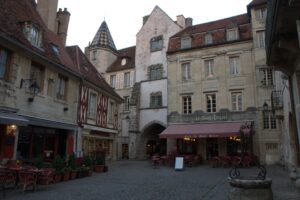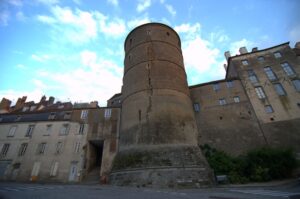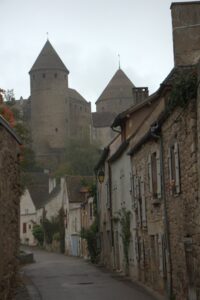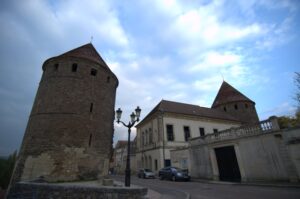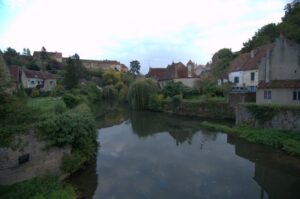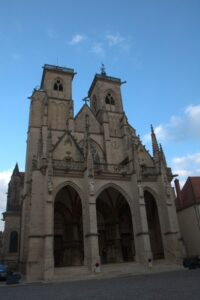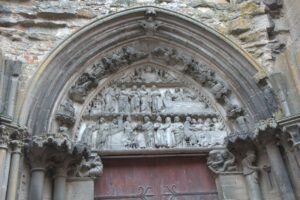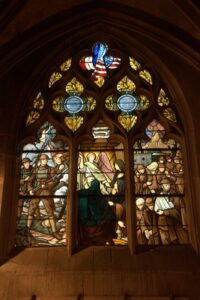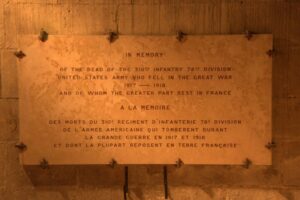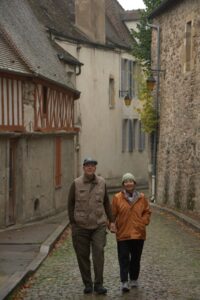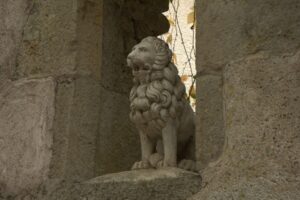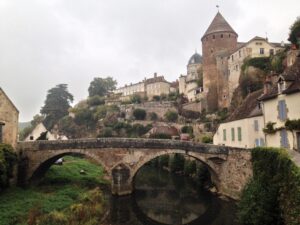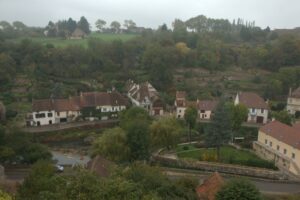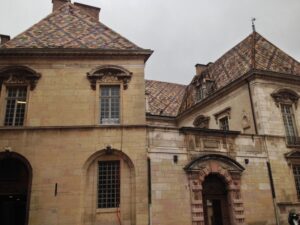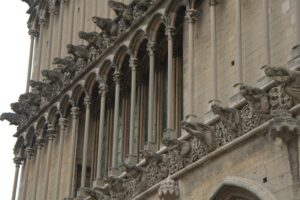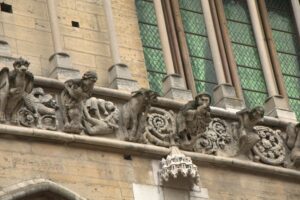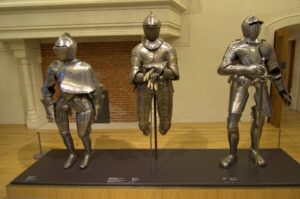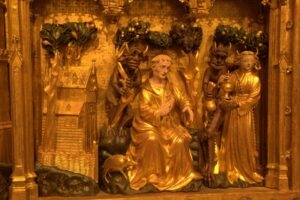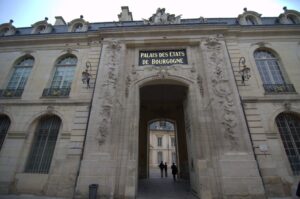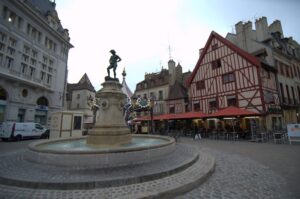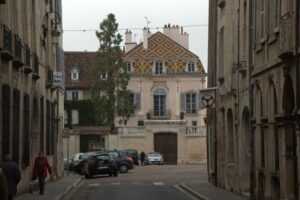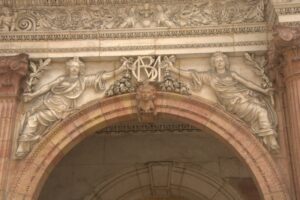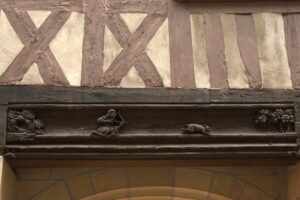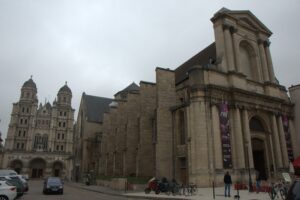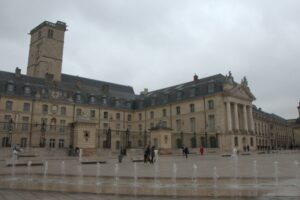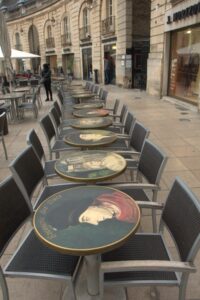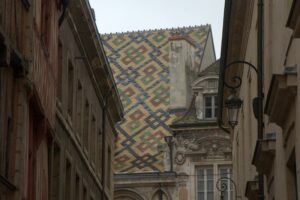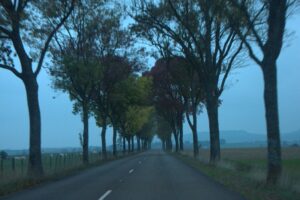Part II of our adventure through Burgundy. Enjoy the pics! Journal continues below…
8 Oct (Accolay – Cravant): Day 9 of our trip was quite possibly the laziest one so far. We had to navigate through a whopping 4 locks to reach Cravant, which all of us voted needed a return trip to because of the tender lamb meat we had discovered in this village last week. We ended up loading up on lamb (in preparation for Tom and Abby’s arrival in a few days), and enjoyed some tasty lamb chops for dinner. Cravant lamb…we still dream of you!
9 Oct (Cravant – Vincelles): On our 10th day cruising the Canal du Nivernais, we made our way from Cravant to Vincelles. Our friendly lockkeeper told us about a local farm in Vincelles where we could buy some homemade cheese and yogurt. We were a bit confused by his directions and he could see that we hadn’t a chance to find the place so he graciously offered to accompany us to the farm. Definitely our favorite lockkeeper! The farm was great, with a nice sample of cheese. Mom and dad bought two wheels of hard cheese, a couple of soft cheeses and some coconut yogurt. The farm is pretty neat, with carved human and animal heads above arched doorways in its massive barn. The cows look super content here too! However, the farm wasn’t the best find of the day for us. We rejoiced when we discovered the art of buying frozen escargot in bulk at the wonderfully stocked Vincelles supermarket. Quite possibly the best find of the trip! Needless to say, we bought several bags of escargot and ate to our hearts content. Yummy yummy escargot!
10 Oct (Vincelles – Bailly): On day 11 of our trip, we awoke at a leisurely hour to enjoy a late breakfast followed by a wander into Vincelles for their market day. Based on the flyers and posters around town, we thought the market would be quite sizeable. Imagine our disappointment when we discovered a solitary booth set up selling moldy cheese! Good thing we hadn’t made a special detour to check out the market, ha. From Vincelles, we cruised over to Bailly, which was our meeting point with Tom and Abby who were joining us later in the day. Since we had the entire afternoon to kill, we decided to head up to Les Caves Bailly Lapierre for some wine and crémant tasting. As luck would have it, a large Norwegian bike group was visiting the same time as us. And their guide had coordinated a very special, one time only tour in English! We were invited to join along which was great because tours normally are held during the weekends only in the off season (and in French with English pamphlets). The caves of Bailly (built in the 12th century) are located in an old limestone quarry. In 1972 the caves were converted to store sparkling wines because of their humidity combined with the constant 12 degrees Celsius temperature (perfect for storing wines). Our guide told us that approximately 80 wine growers participate in the creation of the crémant wines that Bailly is so famous for, with strict rules on what grapes can be used: Pinot Noir, Gamay, Chardonnay and Aligoté. Riddling is done by gyroplate (the winery has about 80 of these devices). In the past, rotation of the wines was done manually, but now the machines rotate the wines on a set schedule. The coolest part of our cave tour was the sculptures carved into the walls of the limestone cave. Several of the sculptures were tied to the theme of wine but a few were quite risqué and adult centric. The winery produced a whopping 4 million bottles of wine each year, and we ended our tour with a free sampling of crémants and a keepsake wine glass. What a way to spend an afternoon! Needless to say, we did not leave the caves empty handed! Tom and Abby finally arrived by early evening, and mom had roasted lamb ready for dinner. A few sessions of Catan may have ensued before the six of us squeezed off to bed in our respective cabins.
11 Oct (Bailly – Auxerre): Today we made our way from Bailly to Auxerre. The pleasant fall weather we had been experiencing was now a thing of the past, with cooler temperatures prevailing. At least it wasn’t raining! As we chugged along the canal, Tom and Abby were given a block of instruction on canal locks. Abby quickly become proficient at opening and closing the lock gates with the hand crank. The lock keepers were all in sync with our schedule, so we wasted no time getting through the necessary locks with our entourage of 3 boats. By early afternoon, we were in lovely Auxerre. This time, the Cathedrale St-Etienne was open, so we were able to finally pay it a visit. The St-Etienne Cathedral is one of the most recognizable and dominating landmarks on the Auxerre skyline with its massive 68 meter tall bell tower. Afterwards, we walked the medieval district, passing under the Tour de l’Horloge, a circa 1483 tower built as part of the city’s fortifications. Back on our boat, we decided to break away from the group to check out two of Auxerre’s other “must sees”. The first was Abbaye St-Germain. We read that there was a 6.50 Euro entrance fee, but the abbey’s cloister was free when we visited. It was late when we decided to try to squeeze in the Church of St. Pierre en Vallée (completing the trio of churches visible to us on the Yonne River). We arrived just as the caretaker was locking up, so unfortunately we weren’t able to check out the interior. The exterior was quite impressive though, and we were happy that we took the time to check it out. With 6 of us on our canal boat, it was a crowded night in Auxerre!
12 Oct (Auxerre – Joigny): Day 13 of our canal trip. Today we had to navigate 31.8 km to reach Joigny from Auxerre. We were finally bidding the Canal du Nivernais goodbye as we made our way back onto the Yonne River. Luckily for us, several other boats were returning to Joigny as well, so the lock keepers were on standby to get us through the various locks as quickly as possible. At the lock just before the village of Bassou, we decided to take a detour to visit “Billot”, the escargot store. It was a chance to break out the bikes for a ride on a sunny day, and we were in Bassou in no time. Unfortunately, Abby’s bike was a bit too big for her and she got slightly injured so Tom had to take over riding duties with Abby riding shotgun. Back on the Yonne, we wasted no time making our way to Joigny, where we had to return the Lezinnes to locaboat tomorrow morning. Since the locks don’t open until 9:30 am, it essentially meant we had to be back at the base station the night before in order to turn the rental boat in on time. In Joigny, Tom and dad decided to drive down to Bailly (so Tom could pick up his car for the drive back to Wiesbaden tomorrow), while the rest of us explored the city. Joigny is an easy, walkable city with lots of half timbered houses. We admired the 16/17th century townhouses with their carved facades and checked out the Churches of Saint Jean and Saint Thibault. What a beautiful city to end our Burgundy canal trip at! We had one last cramped night on board the Lezinnes.
13 Oct (Joigny – Tonnerre – Tanlay – Noyers-sur-Serein – Semur-en-Auxois): Two weeks into our Burgundy vacation. Even though we were no longer on a canal boat, we did have a rental car so we decided to see some of Burgundy’s other highlights. First we had to say goodbye to Abby and Tom who were heading back to Germany. Then we made a beeline from Joigny to Tonnerre, which is famous for its Fosse Dionne pool (surrounded by ancient houses and still providing water to the town). Next up was the Chateau of Tanlay. Unluckily for us, the chateau is closed every Tuesday so we weren’t able to visit it. Undeterred, we drove onward to Noyers-sur-Serein, which is touted as a must-see on any Burgundy itinerary. “The absolutely picturesque medieval village of Noyers (pronounced ‘nwa-yair’), 30km southeast of Auxerre, is surrounded by rolling pastureland, wooded hills and a sharp bend in the River Serein. Stone ramparts and fortified battlements enclose much of the village and, between the two imposing stone gateways, cobbled streets lead past 15th- and 16th-century gabled houses, wood and stone archways and several art galleries. Lines carved into the facade of the 18th-century mairie (town hall), next to the library, mark the level of historic floods. Noyers is a superb base for walking. Just outside the clock-topped southern gate, Chemin des Fossés leads northeast along the River Serein and the village’s 13th-century fortifications, 19 of whose original 23 towers are extant. A few hundred meters beyond the last tower, climb the marked trail to Noyers’ utterly ruined hilltop château, then follow signs to the Belvédère Sud for spectacular perspectives on the town and the valley below.” With a description like that, you know we enjoyed our visit to Noyers! It was a toss up between staying at Noyers or Semur-en-Auxois (a fortified hilltop town) but Becky had found a gem of an apartment in Semur so that solidified our decision. We had to drive onward to Semur so we could stay at the lovely Logis des gouverneurs (http://www.logisdesgouverneurs.com/). Our host, Maïté, greeted us with an excellent bottle of French wine and local pastries (specialty from Semur). The apartment was freaking fantastic. Spacious, gorgeous (used to be the Governor’s mansion), and in the absolute perfect location for exploring spectacularly scenic Semur-en-Auxois. We couldn’t believe our luck! We didn’t know anything about Semur before the trip, but we had read this tantalizing description on someone’s blog and figured we had to see it for ourselves! “Don’t miss Semur-en-Auxois, an incredibly picturesque small fortress town. Perched on a granite spur and surrounded by a hairpin turn in the River Armançon, it is guarded by four massive pink-granite bastions, and the centre is laced with cobbled lanes flanked by attractive houses. At night the ramparts are illuminated, which adds to the appeal. Most of the old city was built when Semur was an important religious centre boasting six monasteries. Just beyond the tourist office, pass through two concentric medieval gates, Porte Sauvigne (1417) and fortified Porte Guillier (14th century) to reach pedestrianised rue Buffon, lined with 17th-century houses. Further on, the Promenade du Rempart affords panoramic views from atop Semur’s medieval battlements. Don’t worry about the menacing cracks in the 44m-highTour de la Orle d’Or – they’ve been there since 1589! Collégiale Notre Dame: (9am-noon & 2-6.30pm), A stained-glass window (1927) and a plaque commemorating American soldiers who fell in France in WWI are inside this twin-towered, Gothic collegiate church.”
14 Oct (Semur-en-Auxois to Dijon): We awoke to some pretty shit weather on our first full day in Semur. Darn it…we really hoped that the weather would cooperate for just a few days longer but our luck ran out today. Despite the cold constant downpour, we trudged outside to explore pretty Semur. Even in the rain, this town is gorgeous! After walking around for several hours, we voted to explore Dijon after lunch. That meant a short drive from Semur to Dijon where we were able to find free street parking. Dijon is a gem. All we knew about it was Dijon mustard, but there is so much more to this city than the condiment! Many of the old historic buildings were spared during the bombing raids of WWII and as a result, Dijon is one of the prettiest of France’s cities. We started at the Notre Dame church (13th century, Gothic “masterpiece”) and stopped by the tourist information office. The helpful staff gave us a map and told us to follow the brass pavement markers of an owl. Dijon’s sights are fairly compact, and its definitely a city to explore by foot. Since we only had an afternoon to explore, we only scratched the surface but what we did see was fantastic…Dijon could lure us back any day! Back in Semur, we sorted through photos, organized laundry, and got ready for the next phase of our European vacation (a whirlwind week in Germany)

